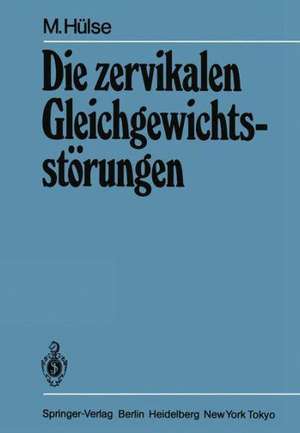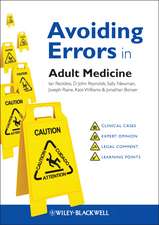Anaesthesia: Essays on Its History
Editat de Joseph Rupreht Cuvânt înainte de Thomas E. Keys Editat de M.J. van Lieburg, J. A. Lee, W. Erdmannen Limba Engleză Paperback – iul 1985
Preț: 726.52 lei
Preț vechi: 764.76 lei
-5% Nou
Puncte Express: 1090
Preț estimativ în valută:
139.06€ • 143.30$ • 117.40£
139.06€ • 143.30$ • 117.40£
Carte tipărită la comandă
Livrare economică 03-17 martie
Preluare comenzi: 021 569.72.76
Specificații
ISBN-13: 9783540132554
ISBN-10: 3540132554
Pagini: 432
Ilustrații: XXI, 409 p. 67 illus.
Dimensiuni: 170 x 242 x 23 mm
Greutate: 0.69 kg
Editura: Springer Berlin, Heidelberg
Colecția Springer
Locul publicării:Berlin, Heidelberg, Germany
ISBN-10: 3540132554
Pagini: 432
Ilustrații: XXI, 409 p. 67 illus.
Dimensiuni: 170 x 242 x 23 mm
Greutate: 0.69 kg
Editura: Springer Berlin, Heidelberg
Colecția Springer
Locul publicării:Berlin, Heidelberg, Germany
Public țintă
ResearchCuprins
1 Introductory Essay.- 1.1 Anaesthesiology: Its Origins and Its Mission.- 2 Pioneers in Anaesthesia.- 2.1 Foreword.- 2.2 Sir Ivan Magill’s Contribution to Anaesthesia.- 2.3 J. T. Clover: A Giant of Victorian Anaesthesia.- 2.4 Charles Waterton (1782–1865): Curare and a Canadian National Park.- 2.5 Francis Sibson (1814–1876): Pioneer and Prophet in Anaesthesia.- 2.6 The Continuing Influence of Ralph M. Waters on Education in Anesthesiology.- 2.7 The Influence of Ralph M. Waters on the Development of Anaesthesiology in Sweden.- 2.8 John S. Lundy: Father of Intravenous Anesthesia.- 2.9 Development of the Apgar Score.- 2.10 Arthur E. Guedel (1883–1956).- 2.11 Dr. Cornelis R. Ritsema van Eck: A Many-Sided Pioneer.- 2.12 The Pioneer Anaesthetists of Australia.- 2.13 Anesthesia and Resuscitation Equipment I Happened to be Involved With.- 3 Development of Techniques.- 3.1 Foreword.- 3.2 The Forgotten Foundations of Modern Closed-Circuit Anesthetic Technique.- 3.3 The Use of Alcohol for Anesthesia by Miguel García-Marín.- 3.4 Early Problems in Establishing Intravenous Anaesthesia.- 3.5 Dissociative Anesthesia.- 3.6 Open Drop Ether Versus Relaxant Techniques in Obstetrics.- 3.7 Massive Blood Transfusions — Warming of Bank Blood.- 3.8 History of Fluid Administration During Anesthesia and Operation.- 3.9 Birth of Neuroplegia and Artificial Hibernation in France.- 3.10 The Treatment of Shock with Vasodilating Agents.- 3.11 The Lytic Cocktail, 20 Years On.- 3.12 The Use of the Cuirass Ventilator, Belt Type.- 3.13 A Mechanical Heart-Lung Machine for Use in Man.- 3.14 The Development of Cardiothoracic Anaesthesia — The International and Local Experience.- 3.15 Regional Block: Its History in the United States Since World War II.- 3.16 The History and Development ofObstetric Anesthesia.- 3.17 History of Resuscitation of Newborn Infants.- 3.18 History and Development of Pediatric Anesthesia in Japan.- 3.19 History of Neurosurgical Anaesthesia.- 3.20 The Origins of Three Important Changes in Anaesthetic Practice.- 3.21 History of Development of Standards for Anesthesia Equipment.- 3.22 Possible Hazards of Technical Progress in Anaesthetic Practice.- 3.23 Theodore Schwann and the Invention of Closed-Circuit Breathing.- 3.24 The Early Development of Blood Gas and Blood Acid-Base Measurements.- 3.25 History of Hypothermic Anesthesia by Surface Cooling in Japan.- 4 Regional Developments in Anaesthesia.- 4.1 Foreword.- 4.2 Anesthesia Research Interests in the United States, 1940–1980.- 4.3 Anesthesiology and Pharmacology at Wisconsin in the 1930s.- 4.4 The Edinburgh Contribution.- 4.5 The Yorkshire Society of Anaesthetists, Its Postwar Birth and Development.- 4.6 Review of Modern Anaesthesia in South Africa.- 4.7 The Impact of the Introduction of Curare in Australia.- 4.8 History of Modern Anesthesia in Japan.- 4.9 The Influence of Modern Anaesthesia of Other Countries on the Growth of Anaesthesia in Japan.- 4.10 History of Modern Anesthesia in China.- 4.11 Reminiscences of Anaesthesia During the Blitz and 10 Happy Years in India.- 4.12 History of Modern Anesthesia in Lebanon.- 4.13 Recent History of Resuscitation in Norway.- 4.14 The Development of Modern Anaesthesia in Italy.- 4.15 On the Development of Modern Anesthesia in Yugoslavia.- 4.16 The Development of Anesthesiology in Czechoslovakia.- 4.17 The First Interdisciplinary Centre for Intensive Care Therapy in Prague.- 4.18 From Open Ether to Open Hearts.- 4.19 Cyclopropane Anesthesia: Its Introduction at Wisconsin.- 4.20 The Introduction of Neuromuscular Blocking Drugs intoAnaesthetic Practice in a Large “Poor-Law” Hospital.- 4.21 Reminiscences of the First German Anesthesia Congress in Hamburg (1927) and Rolf Frey’s Departure to Mainz.- 4.22 A Tale of Two Cities.- 4.23 Reminiscences of the Development of Modern Anaesthesia in Norway.- 4.24 Combat Casualty Anesthesia in Viet Nam.- 4.25 Early History of the British Journal of Anaesthesia.- 4.26 The British Journal of Anaesthesia. Its Evolution to the Present Position.- 4.27 The Acta Anaesthesiologica Belgica.- 5 The World Organization.- 5.1 Foreword.- 5.2 An Account of the Development of the World Federation of Societies of Anaesthesiologists.- 5.3 The World Federation of Societies of Anaesthesiologists, 1968–1984.- 5.4 Anaesthesiology Centre Copenhagen.- 5.5 The Section of Anaesthesia and Intensive Care of the European Union of Medical Specialists and Its Contribution to the Professional Status of Anaesthesiology in the European Economic Community.- 6 Humanism in Anaesthesia.- 6.1 Foreword.- 6.2 Reflections After a 40 year Interest in the History of Modern Anaesthesia.- 6.3 Modern Anaesthesia, with Special Reference to the Chair of Anaesthetics in Oxford.- 6.4 A Worm’s Eye View of the Anaesthetic Department.- 6.5 The Value of the History of Anaesthesia for Anaesthetists and Anaesthetists in Training.- 6.6 The Nurse-Anaesthetist in Norway.- 6.7 The Whys and Wherefores of Collecting.- 6.8 Historical Aspects of the Problem of Surgical Awareness.- 6.9 Clinician Versus Researcher in Anaesthesia.- 6.10 Charles T. Jackson’s Claim to the Discovery of Etherization.- 6.11 Professor William W. Mushin About Anaesthesiology. An Interview.- 6.12 The National Catalogue of Anaesthetic Books, Documents and Equipment.











